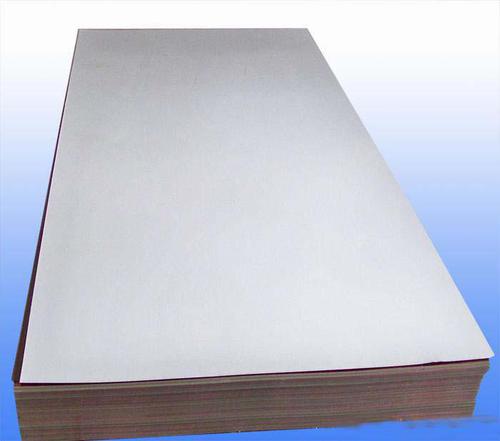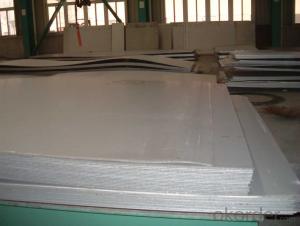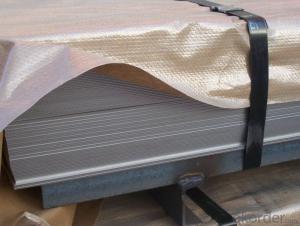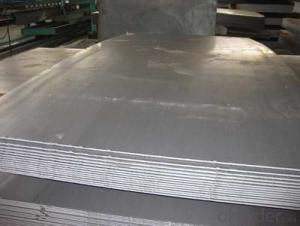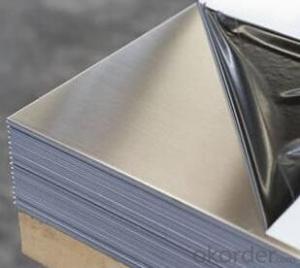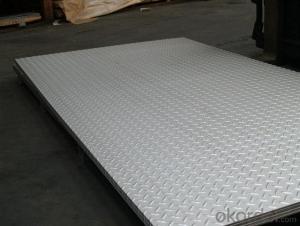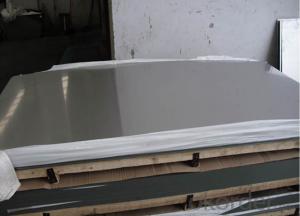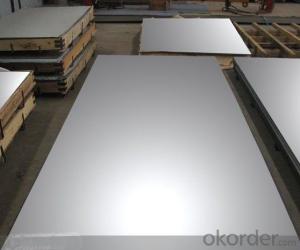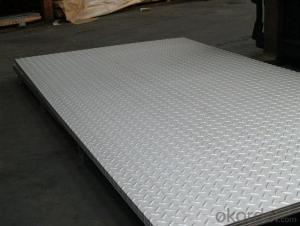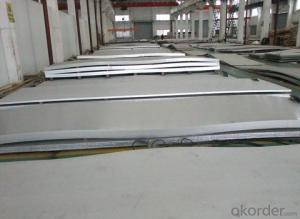stainless steel sheets 304L and 316L
- Loading Port:
- Shanghai
- Payment Terms:
- TT OR LC
- Min Order Qty:
- -
- Supply Capability:
- 1000ton m.t./month
OKorder Service Pledge
OKorder Financial Service
You Might Also Like
stainless steel sheet
Stainless steel is a production which not easy rust,acid resistance and corrosion resistance,so it is widely used in light industry,heavy industry,daily necessities and the decoration industry.my company long term supply stainless steel porducts including:stainless steel sheet,stainless steelcoil and stainless steel tube.
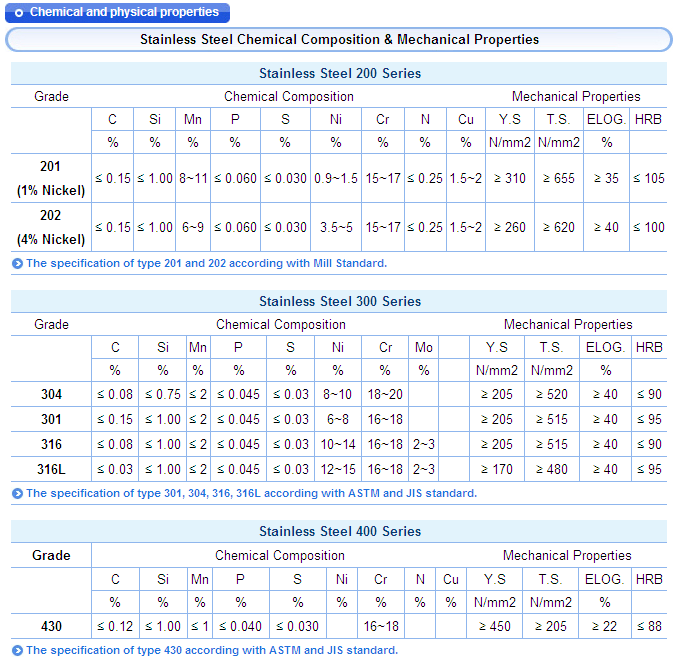
A series of pictures
stainless steel sheet
1.Surface:2B/BA/4K/6K/8K
2.Thickness:0.3-3mm
3.Width:1m 1.219m 1.5m
4.Length:1.5m 6m or as your requirement
A series of picturs
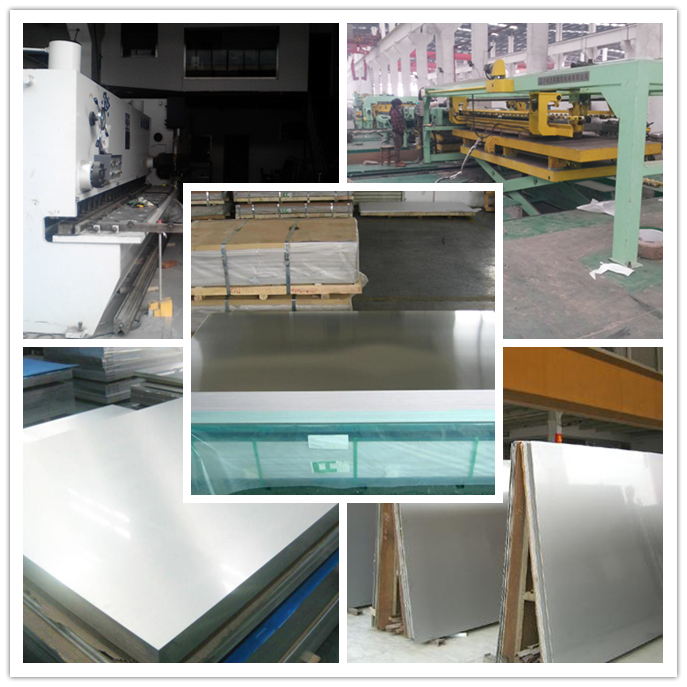

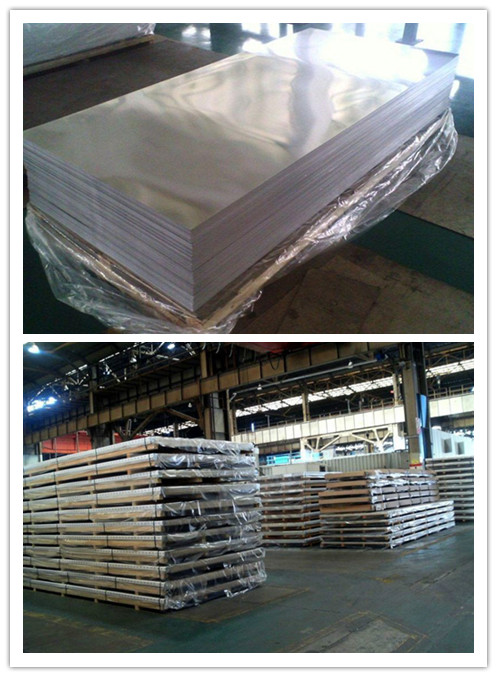
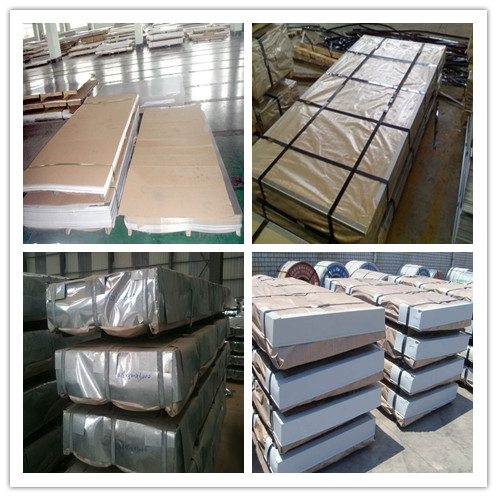


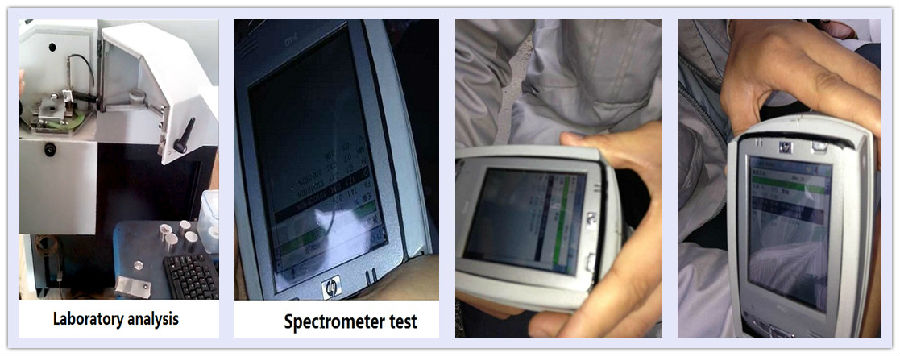
A series of pictures
A series of pictures
A series of pictures
- Q: How do you restore the shine on a stainless steel sheet?
- Achieving a polished appearance for a stainless steel sheet can be accomplished by following a few uncomplicated steps. Initially, it is crucial to ensure the cleanliness of the surface by employing a soft cloth or sponge, as well as a mild detergent mixed with warm water, to wipe away any dirt or debris. Subsequently, the soap residue should be rinsed off and the sheet thoroughly dried. Following this, a minute amount of stainless steel cleaner or polish should be applied to a clean, soft cloth. In a circular motion, gently rub the cleaner onto the stainless steel sheet, paying particular attention to areas that exhibit visible marks or dullness. It is important to adhere to the instructions provided by the manufacturer for the specific cleaner or polish being utilized. After the cleaner has been applied, allow it to remain on the surface for several minutes, permitting it to work its magic. Then, utilizing a fresh section of the cloth, buff the stainless steel sheet by employing circular motions until the shine begins to manifest. This process should be continued until satisfaction with the results is achieved. If a specialized stainless steel cleaner or polish is not available, household items can also be utilized to restore the shine. For instance, a paste can be formed by combining baking soda and water, which can then be applied to the sheet. Gently rub the paste onto the surface using a soft cloth and rinse it off thoroughly. Furthermore, vinegar or lemon juice can be employed to eliminate stains or spots. Applying a small quantity of vinegar or lemon juice to a cloth and rubbing it onto the stainless steel sheet, followed by rinsing and thorough drying, can effectively remove such blemishes. It is imperative to always test any cleaning method or product on a small, inconspicuous area of the stainless steel sheet before employing it on the entire surface. This will ensure that no damage or discoloration occurs.
- Q: Can stainless steel sheets be bent?
- Stainless steel sheets have the capability to be bent. This material, known for its versatility, can be molded into different forms and designs, including bends. The capacity to bend stainless steel sheets relies on their thickness and composition. Generally, thinner sheets are more pliable and easier to bend, whereas thicker sheets might necessitate specialized tools and techniques. It is crucial to bear in mind that the bending procedure could potentially weaken the strength and durability of the stainless steel sheet. Therefore, careful thought should be given to the particular application and requirements before embarking on the bending of stainless steel sheets.
- Q: What is the average lifespan of stainless steel sheets?
- The average lifespan of stainless steel sheets can vary depending on various factors such as the grade and quality of the stainless steel, the environment in which it is used, and the level of maintenance and care it receives. Generally, stainless steel sheets are known for their durability and longevity. They are designed to resist corrosion, rust, and other forms of degradation, making them suitable for a wide range of applications. In ideal conditions and with proper maintenance, stainless steel sheets can last for several decades or even longer. However, in more aggressive environments with exposure to harsh chemicals, extreme temperatures, or high levels of moisture, the lifespan of stainless steel sheets may be reduced. Regular cleaning, proper storage, and routine inspections are important to ensure the longevity of stainless steel sheets. By following recommended maintenance practices, stainless steel sheets can provide reliable performance and a long lifespan.
- Q: What is the specific heat capacity of stainless steel sheets?
- The specific heat capacity of stainless steel sheets may differ based on the specific grade and composition of the stainless steel. Nevertheless, the average specific heat capacity of stainless steel is approximately 500 J/kg°C. Hence, to increase the temperature of one kilogram of stainless steel by 1 degree Celsius, it would necessitate 500 joules of energy. It is crucial to acknowledge that this measurement may not be universally applicable to all varieties of stainless steel. Therefore, it is advisable to seek guidance from specific technical data or reference materials for precise and reliable values.
- Q: What is the cost of stainless steel sheets?
- The cost of stainless steel sheets can vary depending on various factors such as size, thickness, grade, and quantity. It is best to contact a supplier or check online marketplaces to get a specific and up-to-date price for stainless steel sheets.
- Q: What are the specifications of stainless steel plates? Are they the same width?
- Different specifications, width is not the same, there are 1.22 meters, 1 meters, etc., length, width, thickness are different.
- Q: Can stainless steel sheets be used for jewelry?
- Certainly, jewelry can indeed be made using stainless steel sheets. The jewelry industry favors stainless steel as it boasts durability, rust and corrosion resistance, and affordability. It is frequently employed in crafting an array of jewelry items such as rings, bracelets, earrings, necklaces, and pendants. By shaping, cutting, and polishing stainless steel sheets, one can create distinctive and fashionable jewelry designs. Furthermore, stainless steel jewelry is hypoallergenic, rendering it an exceptional choice for those with sensitive skin. In conclusion, stainless steel sheets are a versatile and pragmatic material for crafting exquisite and enduring jewelry pieces.
- Q: Are stainless steel sheets heat-resistant?
- Indeed, stainless steel sheets possess impressive heat resistance. Renowned for their capacity to endure extreme temperatures without distorting or bending, stainless steel sheets prove to be an exceptional option for various heat-exposed purposes. The inclusion of chromium in stainless steel generates a protective coating on its surface, which effectively impedes oxidation and corrosion, even when subjected to elevated temperatures. As a result of this invaluable heat resistance attribute, stainless steel sheets are fitting for an extensive array of applications, encompassing industrial equipment, kitchen appliances, automotive components, and construction materials.
- Q: What are the different types of stainless steel sheets available?
- There are several different types of stainless steel sheets available in the market, each with its own unique properties and applications. Some of the most common types include: 1. Austenitic Stainless Steel Sheets: This type of stainless steel is the most widely used and offers excellent corrosion resistance, high strength, and good formability. It is commonly used in kitchen equipment, food processing plants, and pharmaceutical industries. 2. Ferritic Stainless Steel Sheets: Ferritic stainless steel sheets have a higher chromium content and lower carbon content compared to austenitic stainless steel. They are known for their excellent resistance to stress corrosion cracking and are often used in automotive applications, architectural structures, and appliances. 3. Martensitic Stainless Steel Sheets: Martensitic stainless steel sheets have a higher carbon content compared to other types, which gives them high strength and hardness. They are commonly used in applications requiring wear resistance, such as cutlery, surgical instruments, and turbine blades. 4. Duplex Stainless Steel Sheets: Duplex stainless steel sheets have a mixed microstructure of austenite and ferrite, which provides them with a combination of high strength and excellent corrosion resistance. They are often used in chemical processing plants, oil and gas industries, and marine environments. 5. Precipitation Hardening Stainless Steel Sheets: Precipitation hardening stainless steel sheets are heat-treatable and offer high strength and corrosion resistance. They are commonly used in aerospace applications, defense equipment, and high-performance industries. It's important to consider the specific requirements of your project or application when choosing the type of stainless steel sheet, as each type has its own set of properties and advantages.
- Q: Can stainless steel sheets be custom-cut?
- Yes, stainless steel sheets can be custom-cut to fit specific sizes and dimensions. Stainless steel is a highly versatile material that can be easily manipulated and shaped according to individual requirements. Custom-cutting stainless steel sheets is a common practice in various industries, such as construction, manufacturing, and fabrication. This process ensures that the stainless steel sheets perfectly fit the intended application, whether it is for architectural purposes, machinery parts, or kitchen appliances. Professional metal fabricators or specialized service providers typically use advanced cutting techniques, such as laser cutting, waterjet cutting, or shearing, to accurately customize stainless steel sheets to the desired specifications.
Send your message to us
stainless steel sheets 304L and 316L
- Loading Port:
- Shanghai
- Payment Terms:
- TT OR LC
- Min Order Qty:
- -
- Supply Capability:
- 1000ton m.t./month
OKorder Service Pledge
OKorder Financial Service
Similar products
Hot products
Hot Searches
Related keywords



